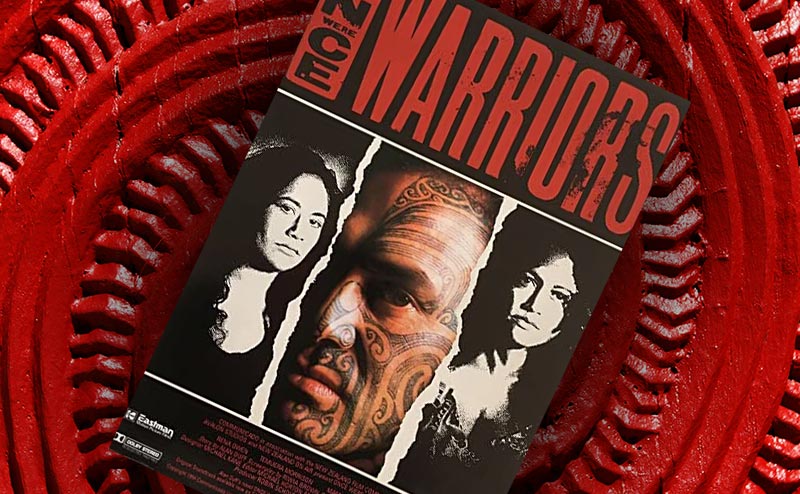
Movie Review: Once Were Warriors
In this week’s Venomous Media Review we will discuss a fantastic film from 1995 that many of you won’t have seen because it is a very small arthouse film from New Zealand called Once Were Warriors. There are a lot of movies filmed in New Zealand – huge, big budget movies like the Hobbit movies and the Lord of the Rings trilogy and Avatar but other smaller films like The Lovely Bones or 30 Days of Night (which takes place in Barrow, Alaska, a place I was just recently) and The Chronicles of Narnia. Movies examining the lives of native New Zealanders, however, are few and far between, particularly movies that examine the lives and experience of the aboriginal people of New Zealand.
Once Were Warriors explores the lives of a family of Maori, an aboriginal community that originated in Polynesia but settled in Australia and New Zealand in the 12th and 13th century. The word “Maori” means “normal” or “natural” and it is meant to separate the people themselves from the gods they worshipped (the “extraordinary” ones). The Maori comprise about 15% of the population of New Zealand and they have a history of being very fierce warriors. Many of the men, even today, tattoo elaborate tribal designs on their faces to make them appear frightening and intimidating and anyone who has seen the New Zealand national rugby team perform the traditional “haka” or war dance immediately before a match understands that these guys aren’t coming to play – they are coming for war.
These and other Maori traditions such as eating their defeated enemies were first described by the explorer James Cook in 1769 during his anthropological expeditions through the Sandwich Islands and Polynesia. The savage customs and primitive cultural traditions of the Maori and other native indigenous people don’t translate very well into modern times and this is the conflict and struggle among the characters of Once Were Warriors. The small Maori family that the film focuses on and their role in the larger Maori community to which they belong are trapped in time. They cling subconsciously to the worst of their cultural identity and traditions from their glorious warrior ancestry while drinking and gambling and being seduced and swallowed by the vices and economic realities of the present. They spend their unemployed days drinking, fighting and tearing things up, complaining the whole time about the government and the paltry federal handouts that they receive and how societal restrictions limit their potential and steal their self-respect. They replace their stolen valor with childish games of strength, stupidity and constant, incessant violence.
The random, brutal domestic violence is impossible to understand (and difficult to watch). In one scene, Big Jake, the father in the family and main protagonist in the film calmly and confidently confronts a large, musclebound monster in a barfight. The bully seems invincible but Jake explodes in a symphony of bloody, deadly violence of the flesh and nearly kills the much bigger man with his bare hands. Jake is capable of furious, murderous, savage, terrifying, violence. After this scene, the audience waits in nervous and uncomfortable anticipation after having witnessed the violence that will almost surely be unleashed again. Jake can be funny and loving and sincere, especially to his daughter but at his core he is a remorseless, violent predator and his rage is fueled by alcohol.
His beautiful wife, Beth, is the frequent target of his drunken rages – he beats Beth regularly and viciously. One morning, after a beating, a friend asks Beth what happened and Beth says, “I just need to learn to keep my mouth shut.” Beth is a courageous, strong and independent woman and she will defend herself and her family but Jake sees Beth’s strength as a threat to himself and his authority in the family and the booze-fueled beatings are an effective way to control her. Alcohol use in the family and in the community are a major problem and it causes terrifying personality changes.
One of the saddest scenes in the film happens when the family prepare to go on a nice picnic and Jake decides to stop the car “for just one drink” and the day takes a horrifying but predictable turn. The children are occasionally beaten but they learn to avoid their out-of-control parents. The older boy, named Boogie, joins a Maori gang and deliberates for the whole movie whether or not to have his face tattooed (guess what he chooses) His younger sister is a beautiful, sensitive, delicate girl named Grace who frequently retreats from the violence into her journal. Grace tells her brother as they are cowering in her bedroom that “alcohol reveals who you really are.” The journal plays an important role in the film because Jake reads it and discovers a terrible betrayal that releases an explosion of violence that is so extreme and so savage and so bloody it is difficult to watch. The expression on Jake’s face when he reads Grace’s secret transmits the fact that the screaming, primal, brutal, savage, murderous beating the happened earlier in the film is nothing compared to the ferocity of the violence that Jake is rushing into.
The ending of this film is naked and terrifying and difficult to watch but it is brilliant and logical. The characters all realize something about themselves that is true and ugly and necessary. ONCE WERE WARRIORS is an incredibly well-made film that tells the story of a strong group of people who are made weak and in some cases destroyed by their own addictions. The film is the highest-grossing movie in New Zealand history and the winner of several international film awards. It is available to watch on Youtube or Amazon Prime and other streaming services.
Watch Trailer
Join the conversation in the Toxicology Section's engagED community


